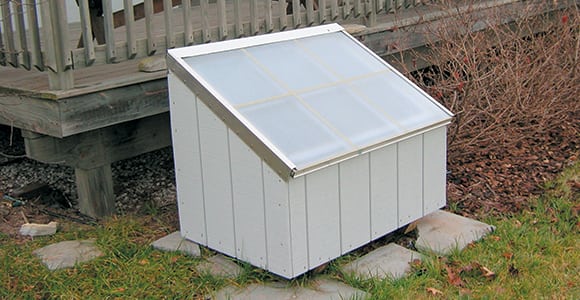We have two teenage daughters who take long showers, so our water-heating costs are high. Does using solar water-heating make sense? What are my solar options, and is there a system I can make myself? — Alan H.
Dear Alan: For a typical family of four, water-heating can account for about 20 percent of its annual utility bills. If you have two daughters taking long showers, yours may be somewhat higher, but don’t expect a solar water-heating system to cut your costs to zero. A target savings of 50 percent often provides a good economic payback.
Before you consider using solar or any other efficient water-heating methods, install low-flow showerheads — and have a talk with your family about taking shorter showers.
The two basic types of solar water-heating systems are “active” and “passive.” Active systems require a storage tank, electric pumps and controls. Sometimes 12-volt pumps can be powered by a photovoltaic solar panel located near the solar water-heating collectors on the roof.
In cold climates, the system has to include some type of antifreeze fluid and heat exchanger so it does not freeze. Other systems that circulate the actual potable water through the collector need a draining system to empty the collectors.
Passive water-heating systems rely on the natural upward flow of less-dense warm water to move the water through the solar collector. In these systems, the warm water storage tank is located above the solar collector — usually on the roof or in the attic, so there are some structural considerations. These systems are less expensive than more sophisticated active systems, but they tend to be less efficient, especially during cold weather.
There are many types of solar collector designs. The best one for your house depends on your climate, hot water requirements and budget. They can be as simple as black copper tubes in an insulated glass-top box to ones with vacuum tubes, concentrating reflectors and heat pipe technology. Discuss the types with your solar contractor.
Unless you are an accomplished craftsman, I suggest you build a passive solar water heater. Trying to build an active system — with collectors on the roof, plumbing and control systems and storage tanks — is beyond the skill level of most homeowners. I am a design mechanical engineer, and I don’t think I could build a system myself from scratch. If you do decide to go with an active system, in general, use a system with an OG-300 rating from the Solar Rating and Certification Corporation (www.solar-rating.org). A knowledgeable, qualified installer is important, too — look for contractors with certification by the North American Board of Certified Energy Practitioners (www.nabcep.org). And check the Database of State Incentives for Renewables and Efficiency (www.dsireusa.org) for local incentives for installing a solar water-heating system in addition to the federal tax credit — just remember to review specific program requirements regarding system types, sizing, certifications, installers and the like to make sure your system qualifies.
Otherwise, try building a passive “batch” system, which is a preheater for your existing water heater. The simplest design, called a “breadbox,” uses a horizontal metal water tank inside a box with a clear top. The sun shines through to heat the water.
You can buy a stainless steel water tank specially designed for this application with inlet and outlet water fittings. If you can find an old water heater that’s not leaky, strip off the metal skin and insulation to use the inner tank. Paint it flat black to absorb more of the sun’s heat.
It does help to insulate the solid sides and bottom of the box, especially if you plan to use it most of the year. Very heavy insulation is not needed because the tank will not get extremely warm, especially if you are using hot water throughout the day. Inch-thick foil-faced rigid foam sheets should be fine. Attach them inside the box so they reflect the sun’s heat to the tank.
Install water valves and plumbing so the solar tank can be drained and bypassed during cold weather. Install heavy insulation around any exposed pipes, and bury as much as possible underground.
The following companies offer solar kits and components: Alternative Energy Store, 877-211-8192, www.altestore.com; Build It Solar, www.builditsolar.com; and Solar Components, 603-668-8186, www.solar-components.com.



